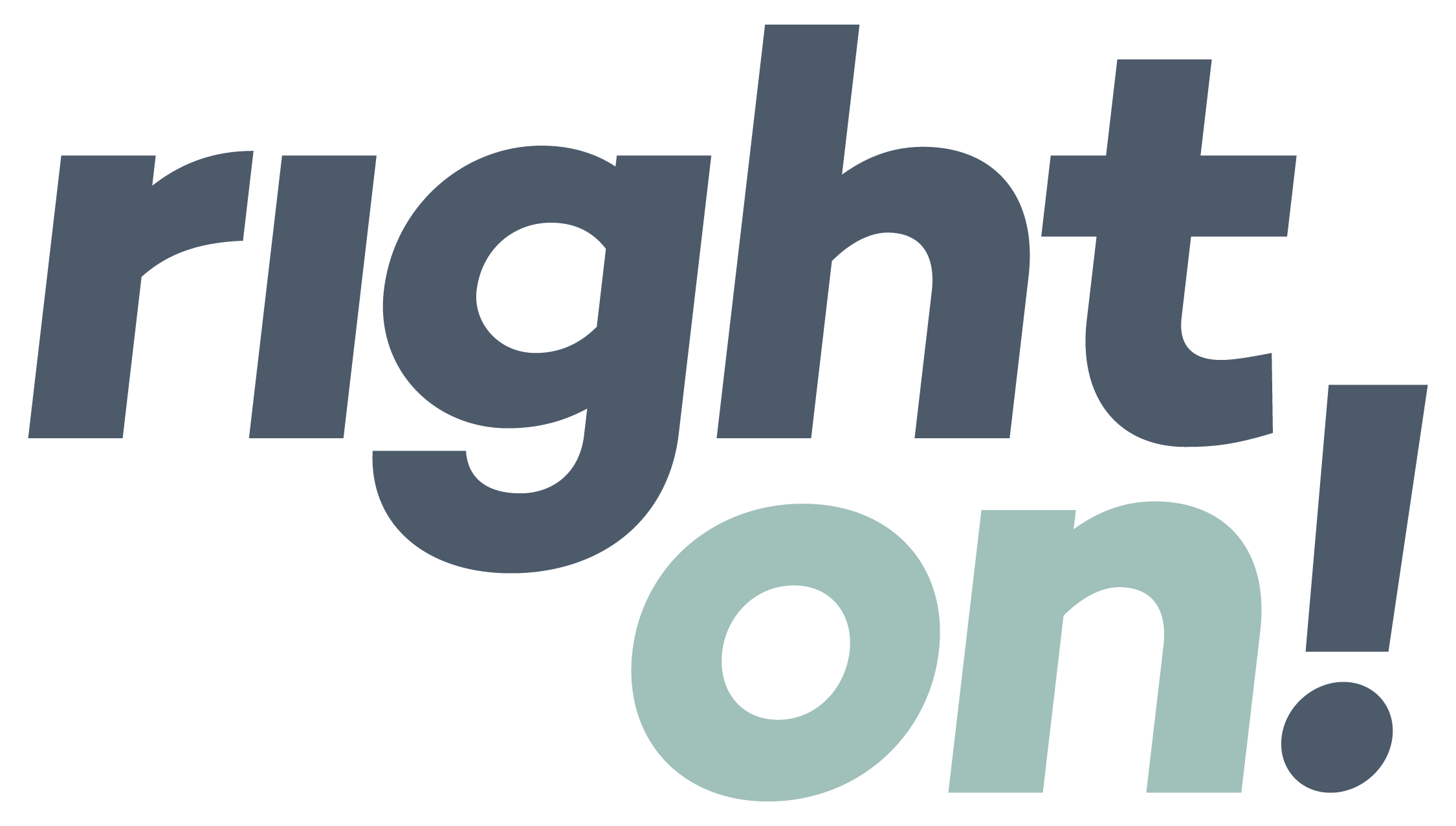
Why data needs story, and what to do about it.
A Q&A with Brent Dykes, author of “Data Storytelling”
Every day at Right On, our writers ply their craft by digging through mounds of information, materials, and briefs to tease out a compelling story—then weaving that story into a memorable and actionable tale that will resonate with its target audience. So when I saw a presentation titled “Data Storytelling” on the docket at the Silicon Slopes Tech Conference this spring, I was drawn to it out of a sense of familiarity.
“This is the room for me!” I thought, savoring the fact that so many of the tech conference sessions centered on the importance of content and story. But, in the Data Storytelling seminar, presented by Brent Dykes (who authored the book Effective Data Storytelling), I found more than the familiar—Dykes shared storytelling insights that felt completely fresh because they came from a data analyst’s perspective, not a copywriter’s.
Even though I consider myself a competent story weaver, I took away several new-to-me tips and ideas on how to approach any piece of content: a presentation, a whitepaper, an infographic, or even a simple headline. Dykes advocated approaching a piece of content with analytical precision and human warmth and relatability.
Clearly this guy knows his way around a story.
I picked up his book, and soon after, was fortunate enough to chat with Dykes in person about the insights he’d shared. I greedily gobbled up all the ways data storytelling best practices intersect with copywriting. Here are a few of the many helpful takeaways from that conversation.
In your book, you really push the importance of defining your central “aha moment” before you even begin drafting. What does that moment mean—and why not start from the beginning of a story?
Your “aha moment” is the central insight you have to share. It’s the main showstopper of your piece. You have to define that “aha” insight and place it at the apex of your story arc, then work back and determine the “hook” that will launch you there. Then, you fill in the other components of your story, like the insights that get you from the beginning to the hook, and finally, the big “aha.”
You need to start with your north star; that’s your compass. And until you’re clear on that, it doesn’t make sense to begin the rest of the process. You could end up in the wrong place. So make sure you have the “aha,” then connect it to the other steps in your story. Don’t fall prey to the temptation to start at the beginning.
Sometimes I see writers make this mistake—for instance, in the news media, you’ll see a story that looks interesting, with lots of cool visuals and interactive elements and data and commentary … but no story arc. Rather, “Here’s a thing, and here’s another thing, and here’s another…. “ It’s like a drumroll that just keeps going and never hits the cymbal.
I’ve seen that in data journalism often—it looks so cool, but doesn’t always have that narrative arc.
Exactly—and then they risk missing the final component of the narrative arc: the solution and next steps. What do you want your audience to do? What action can they take? What problem do they need to fix in their business? I think stories become even more powerful if writers think that way: as you structure your story, be sure to end with a purpose.
I was fascinated that you recommended storyboarding for anyone crafting a story. Usually storyboarding stays in the realm of visual art direction, but in your book you suggest doing it even for written content. How is it different than an outline?
Storyboarding is invaluable when you have a complex story with more than one data point along the story arc. It visually helps you organize the flow of your points and determine which are essential and how they fit together. (Remember, we humans are mostly visual creatures—our brain spends much more of its processing bandwidth on visual stimuli than our other senses. So visualizing your story helps you process and build it.) You can use sticky notes, a notepad, or a whiteboard–and you find the right sequence of points and also identify the gaps you need to fill.
Storyboarding helps define your main “aha moment” if that wasn’t already clear. And now you’ve identified a destination. Then, you can work back on your approach: what’s the best starting point? How can you avoid spending too much time to get to your “aha” and risking losing your audience’s attention?
Once you can visualize your beginning, middle, and end, then you can really map out which info bits are crucial and which are ancillary.
Today, there are a striking number of agencies that focus heavily on design and interactivity yet don’t have a single copywriter on staff. I’ve always thought they’re missing out. So I appreciated how, in your book, you focus on the need for interwoven data, visuals, and narrative to create a compelling story.
Yes, of course art and design are the sexy side of storytelling—but great copy can be amazingly powerful just like images and video can be. When I came into the data storytelling space, there was a lot of emphasis on visualization; in fact, data storytelling was almost a synonym for data visualization.
While visuals have received the bulk of the attention related to data storytelling, they are mainly needed because the underlying data is complex or abstract to follow. It can be less mentally fatiguing and more enlightening to consume insights with the help of charts. However, with that said, I’ve also listened to some interesting podcasts and audio clips that told impressive data stories with no visuals. In my mind, data and narrative are the true “power couple” of these three elements.
I was so relieved that you pointed out someone doesn’t have to be a designer by trade to create helpful visual graphics. In fact, you say you created the majority of the illustrations for your book just by using basic Microsoft Office tools like Excel.
Yes, I wanted to set a low barrier to entry—there’s so much you can do with Excel and with common tools. If you have Office on your computer, you’re equipped to be a data storyteller.
Your one goal is to make the information easy for the audience to understand. Sometimes it doesn’t need to be complex; maybe you’re just comparing a few numbers. And you can handle it very simply—say, by making a bar chart or a column chart. In my book, I discuss all the types of charts and devices you can use to visualize information, as well as which are best to use in different scenarios.
Your book makes a compelling case for why data storytelling is a crucial skill in the business world—both in internal communications and, I’d say, in external marketing too. But also, many of your example anecdotes came from the public health realm, which is front and center in the current battle with the global pandemic. Could data storytelling help save the world?
Well … yes. Right now, there’s a lot of talk about poor data literacy. The general public isn’t aware of simple things like how to compare statistics and how to read them. Which is making the public health crisis worse.
And, on the other side, most government and public health leaders tasked with informing the public right now don’t have a great grasp of data storytelling. So they’re making poor comparisons in news briefings, missing key elements of the analysis and the story. (For example, the fatality totals from Covid are only understandable if they’re given per capita.)
You’ve got to explain concepts and numbers in a way that people can follow. If you throw around statistics in a sterile, abstract fashion, you’re not painting the human picture behind those numbers. They’re story-less.
In my book, I talk a lot about humanizing data by centering stories on people. Today, I heard a statistic about us hitting 20% unemployment. That feels abstract, and our minds aren’t sure how to relate to it. If the statistic were, instead, “One in five people are now unemployed,” then I could wrap my brain around it. I’d think, “Wow, if I have 20 people in my immediate circle of friends and family, there’s a chance now that four of them will be unemployed.”
We’ve seen plenty of poor data storytelling during this crisis, for sure. Do you have any examples of it being done right?
Yes, in fact—when Dr. Anthony Fauci and Dr. Deborah Birx took the public health data and explained it to the White House in such a way that they reconsidered their decision to reopen American businesses at Easter. They must have crafted an extremely compelling argument, using data to convince the president to suspend something he wanted to do. It may be one of the greatest data stories in recent history because there were so many repercussions at stake for our country. They probably saved thousands of lives. It would have been fascinating to be a fly on the wall for that conversation.
On the subject of creating a better world, how many bad PowerPoints will your book save the world from?
Ha! It’s a monumental task, but if I can reduce the bad presentations out there by some incremental amount, I’ll know I’m doing my small part to help people. Bad presentations really are a bane for us all. Most people simply haven’t learned to communicate information, let alone complex narratives.
If presenters had more empathy toward their audiences and cared about how their information and insights were actually received and understood, I think we’d see more good presentations than bad ones.
***
Pick up a copy of Dykes’ Effective Data Storytelling and let us know what you think. Our writer crew is already busy brainstorming all the ways we can apply his principles to branded content and marketing copy—especially when the subject matter is dense or technical, but also when we’re simply looking for our next “aha moment” to inspire a pitch-perfect header.
As social psychologist Jonathan Haidt said, “The human mind is a story processor, not a logic processor.” Let’s put that processor to work doing what it does best.
Our Most Recent Insights.
SEE ALL INSIGHTS →
Storytelling
Here for the journey.
For powerful sustainability stories, think beyond the destination and lean into the journey.

Storytelling
Time to own it. We’re marketers.
Sustainability needs more than communications. It needs marketing.

Storytelling
Keep your eye on the ball.
During tumultuous times, divide your communications team into offense and defense.
